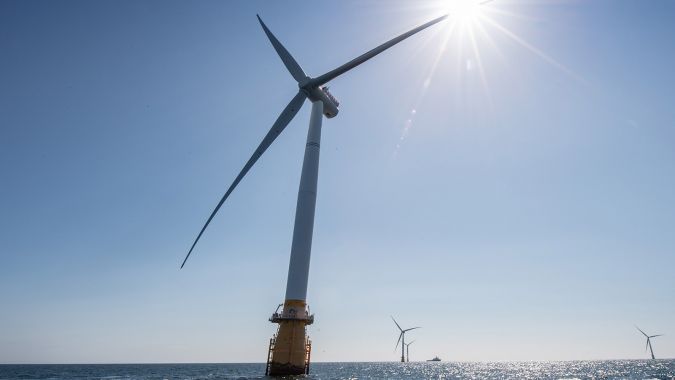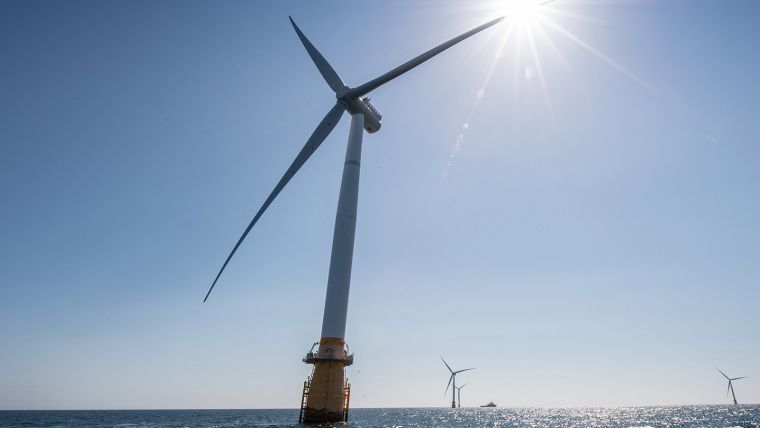Scotland Awards Seabed Rights for Massive Amounts of Floating Offshore Wind
Crown Estate Scotland has announced the results of the ScotWind seabed tender, in which they auctioned 8,600km² of sea space. Under the popular tender, 74 bids were received for the 15 areas, and 17 projects were awarded, covering just over 7,000km² and with a total capacity of almost 25GW. At 15GW, most of this capacity will be floating offshore wind. The system used for awarding seabed leases ensures the new offshore wind farms will be delivered at the lowest cost for consumers and taxpayers.
“The high competition for seabed rights shows just how attractive offshore wind development has become in Europe, and not only conventional bottom-fixed offshore wind. The tender is a huge breakthrough for floating offshore wind, with 15GW of floating projects winning development rights,” says WindEurope CEO Giles Dickson.
The 17 successful projects have been offered option agreements that give them the right to develop offshore wind farms on specific areas of seabed. They will pay an option fee to Crown Estate Scotland, as a one-off payment in exchange for these rights. The option fees are much lower than in the UK’s recent Offshore Wind Lease Round 4. Scotland chose a more sensible tender design with a maximum price ceiling of £100,000/km². This has avoided bidding at very high prices – which keeps the costs of offshore wind low for consumers as seabed leasing costs are usually passed on to the electricity consumer.
Frontrunner in Floating Offshore Wind
Currently Europe only has three small floating offshore wind farms in operation. Two of them, the 30MW Hywind Scotland project and the 50 MW Kincardine project, are already in Scotland. Today’s seabed tender could bring Scotland’s floating wind capacity to 15GW by the mid-2030s, cementing Scotland’s position as a frontrunner in floating offshore wind.
Awarded projects include consortia led by Scottish Power Renewables, Falck Renewables, DEME, Vattenfall, Shell New Energies, OceanWinds, BP Alternative Energy Investments, SSE Renewables, BayWa, Offshore Wind Power, Northland Power and Magnora.
Developers had to submit a Supply Chain Development Statement (SDCS), showing how at least 25% of project-related expenditure will be made in Scotland. The winners of the tender will also be asked to coordinate investments and adjust their SDCS to bring more consistency and scale to the development of Scotland’s emerging offshore wind supply chain.
“Offshore wind will contribute to the renaissance of Scottish engineering and Scotland’s maritime industry. Offshore wind developers plan huge investments in Scotland’s supply chain and port infrastructure. This means new jobs in coastal regions and tax revenues for local municipalities,” says Giles Dickson.
Breakthrough for Floating Offshore Wind
2022 is going to be a year of breakthroughs for floating offshore wind in which we will see real progress towards the development of commercial-scale floating wind farms. In addition to the ScotWind tender, France will announce the results of the world’s first auction to build a large-scale floating wind farm – 250MW off Brittany. Also, Europe will start operating its fourth floating offshore wind farm when Equinor commissions the 88MW Hywind Tampen wind farm in Norway – which will use floating turbines to power oil and gas platforms, allowing a significant reduction in CO2 emissions from fossil fuel extraction.
Meanwhile Greece, Italy and Spain are advancing new strategies and legislation that will lead to auctions for large-scale floating offshore wind in the Mediterranean and Atlantic. The Greek Energy Ministry is aiming for a first auction in the first half of 2022. Italy’s Ministry of Ecological Transition has received 64 Expressions of Interest for the development of floating offshore wind projects, and the Spanish government is developing an Offshore Wind Roadmap and aiming for up to 3GW of floating wind by 2030.
One Third of Europe’s Offshore Wind Floating by 2050
Floating offshore wind holds the key to inexhaustible wind energy resources in Europe. 80% of Europe’s offshore wind resource is in waters deeper than 60m, including most wind energy resources in the Atlantic, the Mediterranean Sea, the Celtic Sea, the Black Sea and the Norwegian Sea. In these areas, traditional bottom-fixed offshore wind is not economically attractive, and floating offshore wind offers the technological solution to generate large volumes of renewable electricity and drive Europe’s energy transition. Up to one third of the offshore volumes needed to reach net zero in Europe by 2050 will come from floating offshore wind.
Given these recent developments across Europe, floating offshore wind will also be a central topic at WindEurope’s Annual Event 2022, taking place in Bilbao on 5-7 April. Developers, shipyards and ports in the Basque Country are getting ready to lead Spain’s floating offshore wind expansion. WindEurope 2022 side events and field trips will offer valuable insights into Spain’s most advanced floating offshore wind projects.















